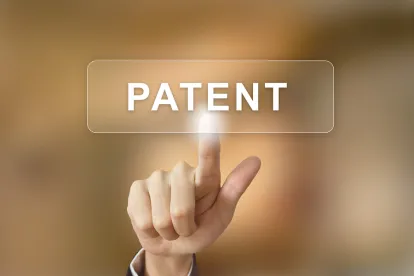In its Institution Decision, the Board instituted inter partes review of claims 1-3, 5-8, and 10-41 of the ’826 patent. The ’826 patent “relates to methods of using a sustained release oral dosage form of an aminopyridine composition to treat a neurological disorder, such as multiple sclerosis (‘MS’), by maximizing the therapeutic effect, while minimizing adverse side effects.”
The Board addressed the prior art printed publication status of the S-1 reference. “[P]etitioner asserts that as early as 2000, a person of ordinary skill in the art (‘POSA’) would have known that Patent Owner was investigating fampridine (4-aminopyridine or ‘4-AP’) ‘for the potential treatment of spinal cord injuries and multiple sclerosis.’ . . . Petitioner also contends that news publications dated before the September 2003 filing date of the S-1 indicated to the public that Patent Owner had engaged in clinical trials for the treatment of MS using Fampridine-SR (sustained release).” Petitioner contends “that based on such publications, an ordinary artisan would have been motivated to look for information and documents, including U.S. Securities and Exchange Commission (‘SEC’) filings, such as the S-1 pertaining to an initial public offer of stock, discussing Patent Owner’s activities, such as clinical trials studying the effect of Fampridine SR in MS patients” and that “the S-1 was publicly available online in the SEC’s Electronic Data Gathering, Analysis, and Retrieval (‘EDGAR’) system by at least September 30, 2003.” In support, Petitioner relies on a Declaration by Mr. Bennett, an academic librarian.
In response, “Patent Owner argues that the S-1 document was not ‘sufficiently accessible to the public interested in the art’ in 2003.” Patent Owner further argues that “Petitioner has provided no evidence that the S-1 was indexed or cataloged in the SEC’s EDGAR database in a way that would have made it sufficiently accessible to those of ordinary skill in the art” and that “EDGAR only adopted full-text keyword searching in 2006, after the priority date of the claimed invention,” and therefore EDGAR in 2003 was not “like the ‘automated catalog’ in Lister or the library in Cronyn, which the Federal Circuit held were not sufficiently accessible.”
The Board, however, was “persuaded that Petitioner has provided a sufficient showing that the S-1 was publicly accessible to the public interested in the art as of September 30, 2003” and distinguished non-binding Liberty Mutual Ins. Co. v. Progressive Casualty Ins. Co., CBM2013-00009, Paper 68 (PTAB Feb. 11, 2014). First, “the SEC Digest explains how to obtain a copy of the S-1, as of the SEC Digest’s publication date of September 30, 2003.” Second, “such documents would have prompted a person of ordinary skill interested in the art to look for other publicly available information relating to Patent Owner and its activity, including SEC documents, such as the S-1, via EDGAR” and that “an ordinary artisan looking for such documents could have located the S-1 upon exercising reasonable diligence, for example, in view of EDGAR and the SEC Digest, as discussed above.” Finally, “unlike here, the petitioner in Liberty Mutual provided little to no information as to how one could locate the 10-K form at the SEC by any means.” The Board did not “read the panel in Liberty Mutual to say that the ability to search an SEC form ‘based on the technical content contained therein’ is a requirement for such a form to qualify as a printed publication in every factual circumstance, regardless of whether other means exist to allow one to locate the document upon exercising reasonable diligence.” In this case, “Petitioner reasonably points to EDGAR and the SEC Digest as providing available means to locate and obtain a copy of the S-1.”
The Board next addressed Patent Owner’s request for the Board to exercise its discretion to deny institution of trial under 35 U.S.C. § 314(a) and § 325(d), arguing “that prior art references asserted in the current Petition also were asserted or cited by the same Petitioner challenging the same claims in a Petition that we denied in an earlier case.” The Board was not persuaded, noting that, unlike here, “we denied institution on the basis that grounds in the earlier Petition relied on two posters, and Petitioner failed to make a threshold showing that either poster was sufficiently publicly accessible to qualify as a ‘printed publication’ under § 102(b).”
The Board then addressed asserted obviousness over the S-1 and Hayes references, finding “that Petitioner is reasonably likely to succeed in showing that the S-1 expressly discloses or suggests all limitations of the challenged claims except the pharmacokinetic limitations recited in the independent claims.” However, the Board was persuaded “that Petitioner is reasonably likely to succeed in showing that it would have been obvious to an ordinary artisan reading the S-1 to administer 10 mg of 4-aminopyridine (Fampridine-SR) twice daily for longer than one week, including for ‘a time period of greater than two weeks,’ in a method to improve walking or increase walking speed in MS patients, as recited in the challenged claims.” Moreover, the Board was also persuaded “that Hayes indicates that administration of 10 mg of 4-aminopyridine (Fampridine-SR) given twice daily achieves ‘steady state’ after 4 days of dosing, and, at that point, meets the pharmacokinetic limitations recited in the independent claims, as determined from data presented in Table 3 of Hayes, as Petitioner contends.” Inter partes review was therefore instituted.
Coalition For Affordable Drugs (ADROCA) LLC v. Acorda Therapeutics, Inc., IPR2015-01853
Paper 13: Decision on Institution of Inter Partes Review
Dated: March 11, 2016
Patent: 8,007,826 B2
Before: Michael P. Tierney, Lora M. Green, and Jacqueline Wright Bonilla
Written by: Bonilla
Related proceedings: Acorda Therapeutics, Inc. v. Mylan Pharms. Inc., No. 14-935 (D. Del); Acorda Therapeutics, Inc. v. Mylan, No. 14-139 (N.D. W.Va.); Acorda Therapeutics, Inc. v. Accord and Intas, No. 14-932 (D. Del.); Acorda Therapeutics Inc. v. Mylan Pharm. Inc., Case 15-124 (Fed. Cir.); Case No. IPR2015-00817; Case No. IPR2015-00720; Case No. IPR2015-01857; Case No. IPR2015-01850; Case No. IPR2015-01858.



 />i
/>i

